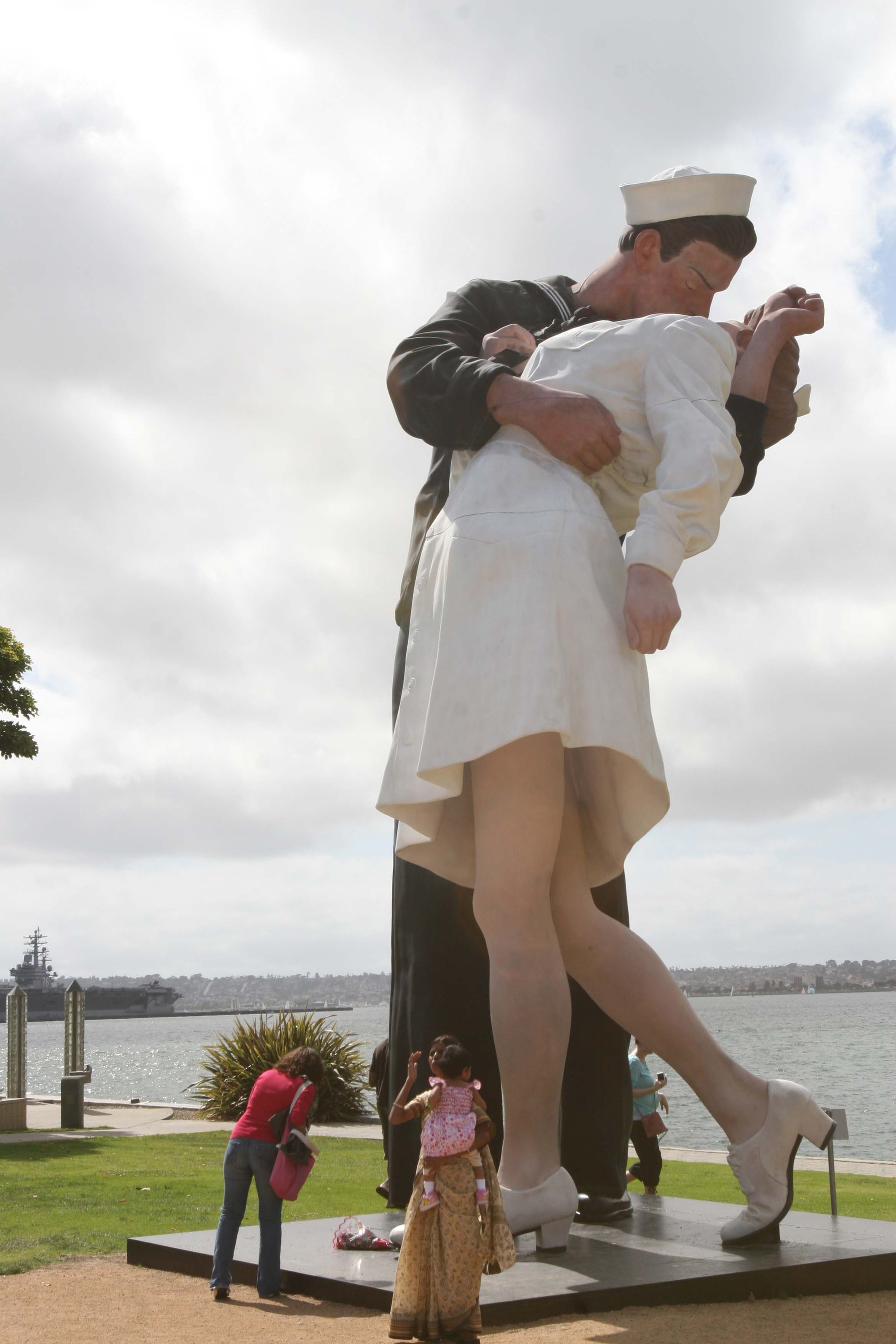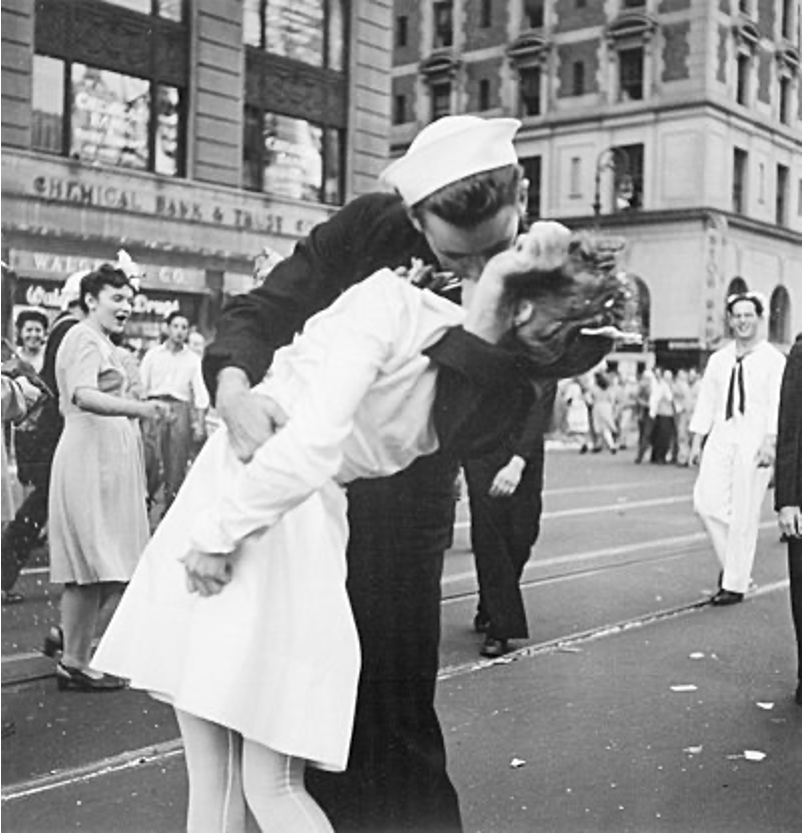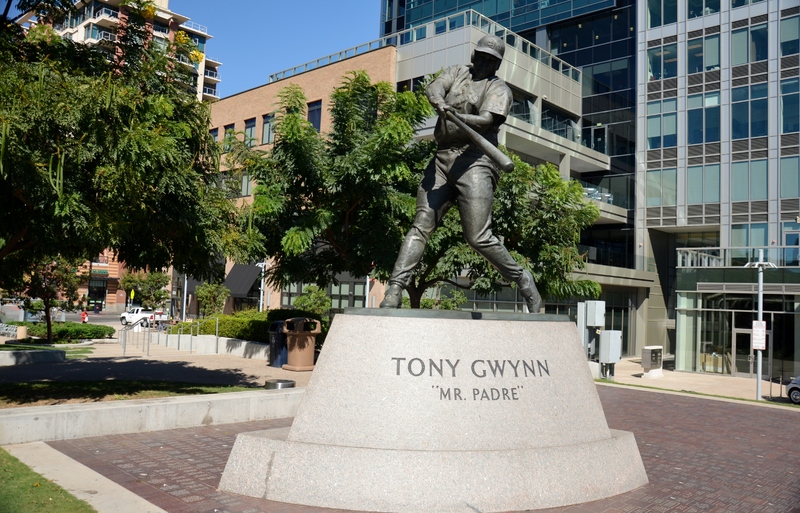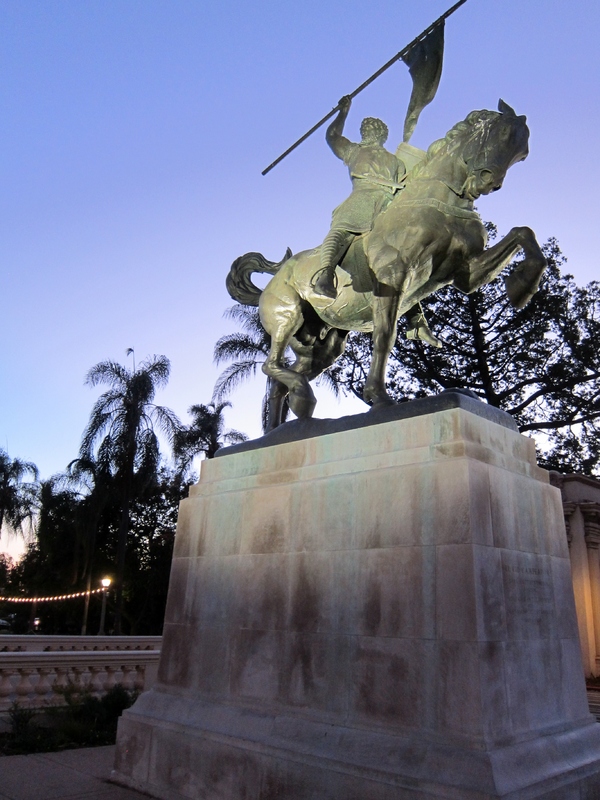The Lack of Representation
Women & Indigenous Representations in San Diego Monuments
Guardian of the Water
Statue Guardian of the Water by Donal Hord was dedicated in 1939 purported to represent a pioneer woman with an olla (jug) on her shoulder. While it does represent a female figure, she is unnamed and does not represent a local woman. Local San Diegan, Helen Towle (according to SanDiegoCounty.gov) willed more than $30,000 to the San Diego Fine Arts Society and earmarked $6,000 to be used exclusively for purchasing ”works of art of a permanent nature, to be given to the people of San Diego,” and those funds went towards the creation of this sculpture fountain with the remaining $14,000 being supplied by the Works Progress Administration to fund Donal Hord’s work.

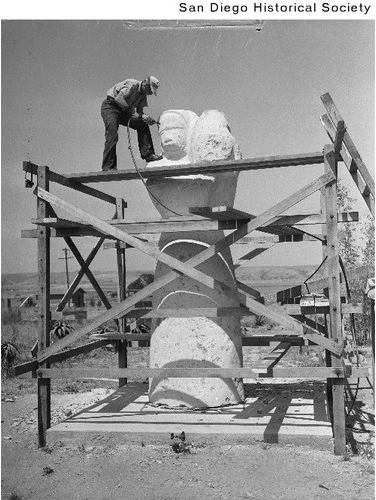
The Indian
The statue of The Indian by Arthur Putnam completed in 1904 is nine feet tall and is representative of an almost "savage" representation of an Indigenous San Diegan leaning on a conquered panther or mountain lion. The statue previously stood at the Presidio but is now housed at the San Diego Historical Society. Putnam was contracted by E.W. Scripps to create a series of five bronze figures representing the different peoples who had played an important role in our history. The first was to be the Indian, the first inhabitant of the area, according to SanDiego.gov. However, Putnam was born in Mississippi and moved to Nebraska where he was raised. He moved to San Francisco in 1900 and it is unlikely that when he was commissioned to make this statue he was unfamiliar with Native Americans who originally inhabited what came to be known as Southern California.
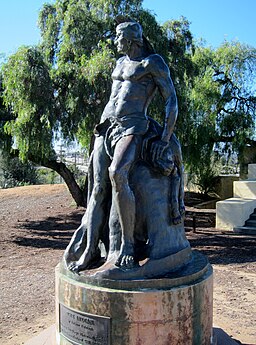
Kate Sessions
The statue Kate Sessions by Ruth Hayward was dedicated in 1998 – fifty-eight years after she died. She was considered the “mother of Balboa Park.” She moved to San Diego in 1883 from San Francisco and in 1885 purchased a nursery to continue her love of botany and horticulture. In 1892, Sessions worked with the city of San Diego to lease 30 acres of land in what was then known as City Park (today’s Balboa Park) where she agreed to plant 100 trees per year and an additional 300 trees per year throughout San Diego. Sessions grew most of the trees from seedlings at her nursery and in 1900 traveled to Baja California, returning with a palm tree that was not native to San Diego. She traveled to find drought resistant varieties of trees and also met with sailors and merchants arriving at San Diego port to inquire where their travels were taking them to acquire drought resistant trees from around the world including from as far away as Yemen. Many of these varieties are still thriving in Balboa Park today. Kate Sessions’ statue represents possibly the only female San Diegan represented in the city and came about after much legal wrangling.

Kate Session Statue
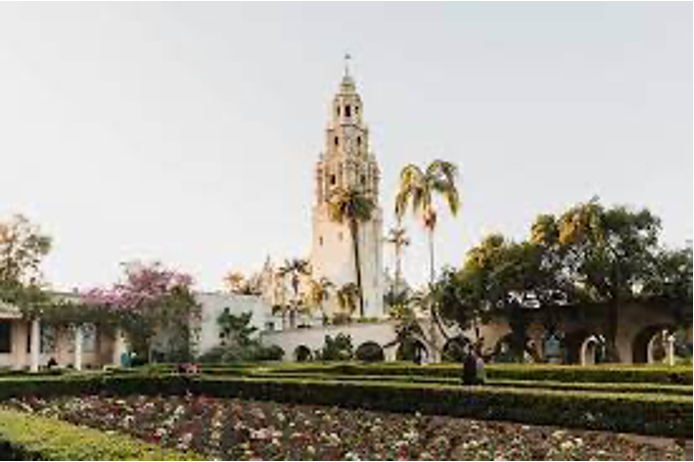
Balboa Park, San Diego
The interesting note on the name change to Balboa Park is that prior to the Panama-California Exposition in 1915, a local contest to rename the 1,200 acre City Park was held. The winning entry provided by local San Diegan Mrs. Harriet Phillips suggested Balboa to owner Spanish explore Vasco Núñez de Balboa who was the first European to see the Pacific Ocean, despite the fact that the explorer never saw or spent time in San Diego. He, in fact, died 23 years before Juan Rodriguez Cabrillo was the first European explorer to explore the shores of San Diego.

Unconditional Surrender
This statue, known interestingly enough as Unconditional Surrender is a computer generated model of the 1945 iconic photograph by Alfred Eisenstaedt of a sailor in Times Square, New York City. However, a copyright-free version by Victor Jorgensen is used here. The picture represents a sailor grabbing an unsuspecting nurse that he does not know and kissing her. Although it has become iconic, it is an unfortunate representation of sexual assault that is now prominently displayed near the waterfront of San Diego since 2007. The statue was originally put in place as a temporary exhibit moved to San Diego from Florida via a flatbed truck. The statue has a foam core and is covered in an urethane outer layer that more-or-less weatherproofs the sculpture. The exhibit was meant to close down in 2010 but after restoration work in 2012, it has become a permanent fixture.
